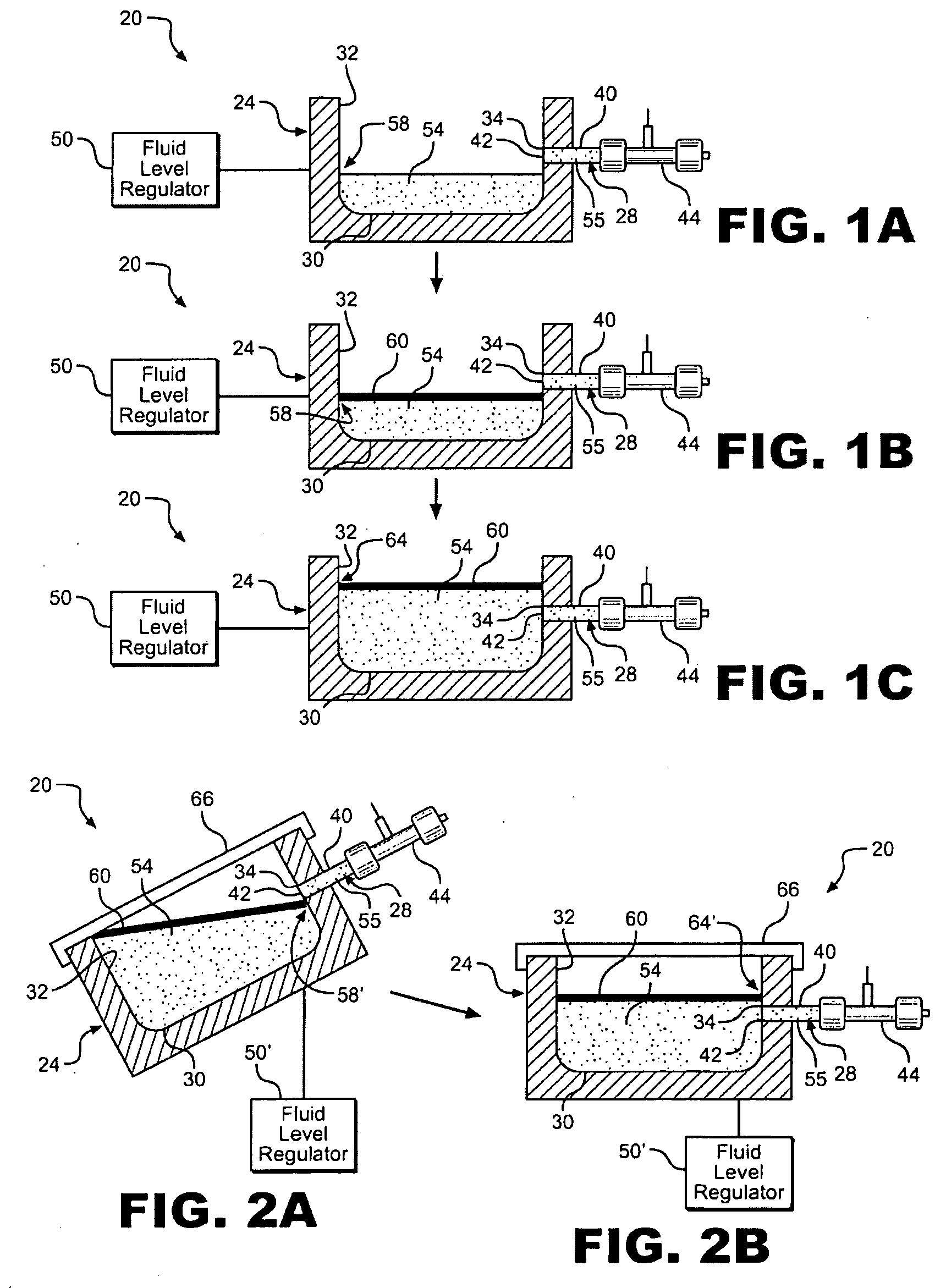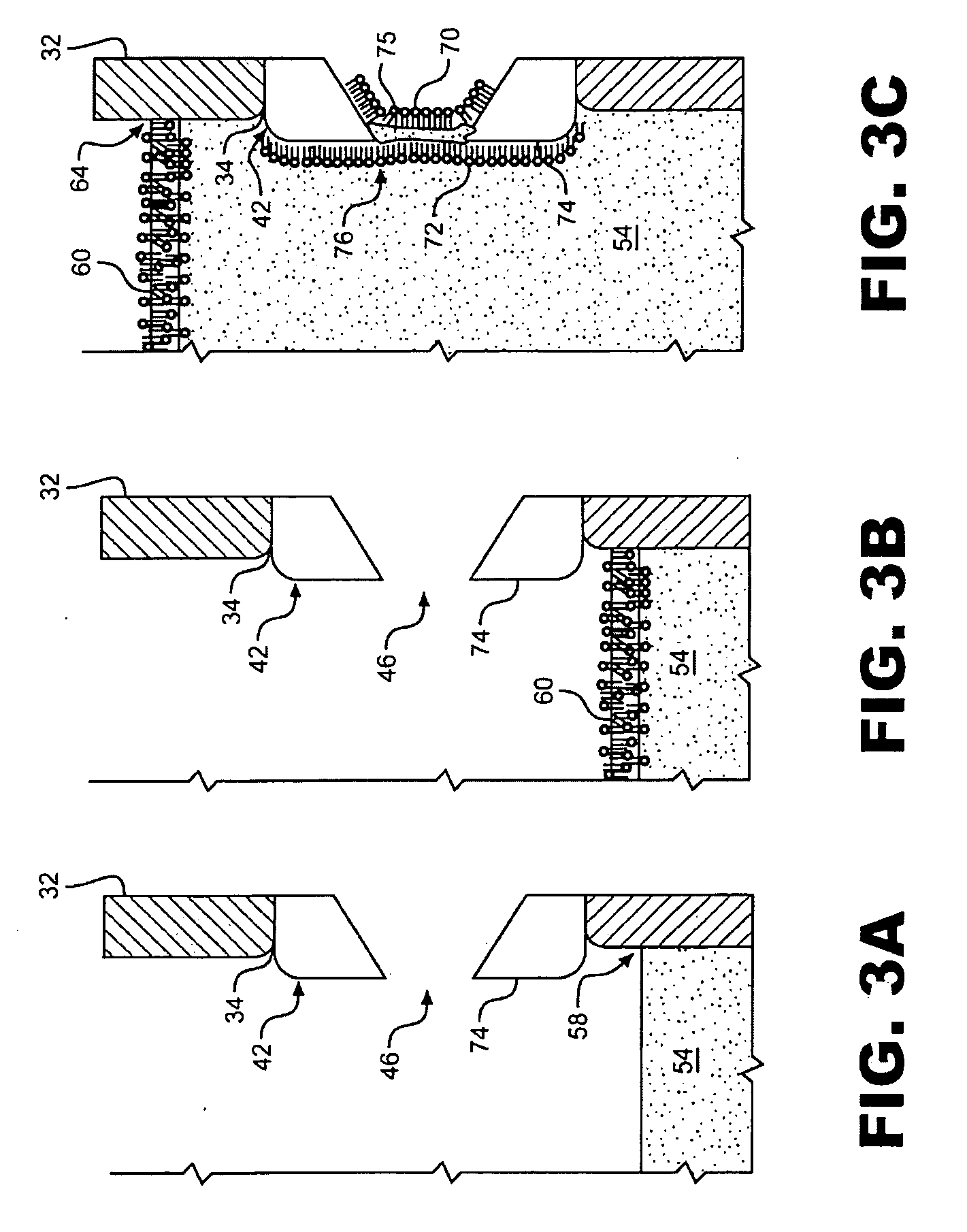Method and Apparatus for Single Side Bilayer Formation
a bilayer and lipid technology, applied in cell components, instruments, material electrochemical variables, etc., can solve the problems of inability to utilize the application of apposition in systems where only one side of an aperture is accessible, ion channels in this region will have a tendency to produce anomalously low conductances, and the painting method is a manual process that requires considerable skill to achieve, so as to avoid the significant learning curve
- Summary
- Abstract
- Description
- Claims
- Application Information
AI Technical Summary
Benefits of technology
Problems solved by technology
Method used
Image
Examples
Embodiment Construction
[0029]In general, the present invention is directed to a system and method for formation of planar lipid bilayers (PLBs) across nanometer and micron scale apertures, i.e. nanopores. With initial reference to FIGS. 1A-1C, a membrane forming apparatus of the present invention for use in single-side bilayer formation is generally indicated at 20. Membrane forming apparatus 20 includes a first fluid cell or chamber 24 adapted to retain fluid, and a second fluid chamber 28 adapted to retain fluid. First fluid chamber 24 includes a bottom wall 30 and at least one sidewall 32 including at least one aperture 34 therein through which second fluid chamber 28 is connected. In a preferred embodiment, first fluid chamber 24 is a 1.25 cm×3 cm×2 cm Teflon® cell having a total capacity of approximately 7.5 cm3. Second fluid chamber 28 also includes at least one sidewall 40 and a barrier wall 42 separating first fluid chamber 24 from second fluid chamber 28. In the preferred embodiment shown, second...
PUM
 Login to View More
Login to View More Abstract
Description
Claims
Application Information
 Login to View More
Login to View More - R&D
- Intellectual Property
- Life Sciences
- Materials
- Tech Scout
- Unparalleled Data Quality
- Higher Quality Content
- 60% Fewer Hallucinations
Browse by: Latest US Patents, China's latest patents, Technical Efficacy Thesaurus, Application Domain, Technology Topic, Popular Technical Reports.
© 2025 PatSnap. All rights reserved.Legal|Privacy policy|Modern Slavery Act Transparency Statement|Sitemap|About US| Contact US: help@patsnap.com



